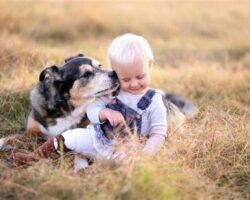Discover the key traits and top 5 dog breeds for adaptability. Learn training methods and tips for helping your dog adjust to new environments. Choose the right breed for your lifestyle.
Understanding Adaptability in Dogs
Understanding Adaptability in Dogs
Adaptability in dogs is the ability of a dog to adjust and thrive in different environments and situations. This trait is essential for dogs that are frequently exposed to different settings, such as travel, changing households, or new activities. Highly adaptable breeds are valuable for individuals or families who have busy, dynamic lives and need a pet that can seamlessly transition with them. There are several key factors that contribute to a dog’s adaptability, including genetics, socialization, and training.
Genetics play a significant role in a dog’s adaptability, as certain breeds have been specifically bred to be versatile and resilient in various circumstances. Breeds such as the Border Collie, Australian Shepherd, and Labrador Retriever are known for their exceptional adaptability and can thrive in a range of environments. These dogs have a strong instinct to work and please their owners, which makes them highly adaptable to new situations and activities.
Socialization and training are also crucial for developing a dog’s adaptability. Exposing a dog to different people, animals, and environments at an early age can help them become more confident and adaptable as adults. Additionally, using positive reinforcement training methods can help a dog learn to cope with novel experiences and challenges, which ultimately enhances their adaptability. By understanding the factors that contribute to a dog’s adaptability, owners can make informed decisions about the breed that best suits their lifestyle and needs.
Key Traits of Highly Adaptable Breeds
When it comes to choosing a dog breed that can easily adapt to various environments, it’s important to consider the key traits of highly adaptable breeds. One of the most important traits is a flexible and open-minded temperament. Dogs with this trait are more likely to adjust to new situations and surroundings without becoming stressed or anxious.
Another key trait of highly adaptable breeds is their ability to be easily trained. These dogs are quick learners and can easily pick up new commands and behaviors, making it easier for them to adapt to new environments and situations.
Highly adaptable breeds also tend to be sociable and friendly towards people and other animals. This makes it easier for them to form new bonds and relationships in different environments, whether it’s with new owners, other pets, or unfamiliar people.
Environmental Factors to Consider
When considering the adaptability of a dog breed to changing environments, it’s important to take into account various environmental factors. Climate is one of the most significant factors to consider, as certain breeds are better suited for extreme cold or heat. For example, Siberian Huskies are known for their ability to thrive in cold climates, while breeds like Chihuahuas may struggle in extremely cold temperatures. It’s also important to consider the terrain of the environment, as some breeds are better suited for rugged, mountainous terrain while others may do better in flat, open areas.
Vegetation and foliage in the environment can also play a role in a dog’s adaptability. Some breeds are more adept at maneuvering through dense foliage, while others may struggle in such environments. Additionally, the presence of water in the environment can impact a dog’s adaptability, as breeds like Labradors and Retrievers are well-suited for water-based environments.
It’s also important to consider any potential hazards or dangers in the environment, such as wildlife, toxic plants, or other potential threats. Certain breeds may be better equipped to handle these hazards, while others may require more careful supervision and management in such environments. By considering these environmental factors, you can better assess which dog breeds are best suited for changing environments and make an informed decision when choosing a pet.
Training Methods for Adaptability
Training Methods for Adaptability
When it comes to training your dog for adaptability, it’s important to focus on positive reinforcement. Using rewards such as treats or praise can help encourage your dog to embrace new experiences and environments. By associating these positive experiences with change, your dog will be more likely to adapt to different situations without fear or anxiety.
Another effective training method for adaptability is desensitization. This involves gradually exposing your dog to different stimuli in a controlled and positive way. For example, if your dog is nervous around new people, you can start by introducing them to one new person at a time, providing rewards and reassurance throughout the process. Over time, your dog will become more comfortable with meeting new people, making it easier for them to adapt to new social situations.
In addition to these training methods, providing a stable and secure environment for your dog is essential for building adaptability. Creating a consistent routine, offering plenty of mental and physical stimulation, and ensuring your dog feels safe and secure in their surroundings will all contribute to their ability to adapt to new environments and experiences.
Top 5 Dog Breeds for Changing Environments
Top 5 Dog Breeds for Changing Environments
Dogs are known for their loyal and loving nature, but not all breeds are equally adaptable to changing environments. When considering which dog breed to bring into your home, it’s important to take into account their ability to adjust to new surroundings.
Highly adaptable breeds are able to thrive in a variety of environments, making them ideal for families who may move frequently or enjoy outdoor activities. These breeds often possess key traits such as intelligence, resilience, and a sociable nature, making them well-suited for changing environments.
Some environmental factors to consider when choosing a breed include climate, living space, and daily routine. Breeds that can handle a range of temperatures, have moderate exercise needs, and are open to new experiences are often the best choice for changing environments.
Choosing the Right Breed for Your Lifestyle
When it comes to choosing the right dog breed for your lifestyle, it’s important to consider a variety of factors. Different breeds have different needs and habits, so it’s essential to match your lifestyle and living situation with a breed that will thrive in that environment. Whether you live in a small apartment in the city, or a large house in the countryside, there is a breed out there that will fit perfectly into your life.
One of the most important considerations when choosing a dog breed is the amount of exercise and activity they require. If you lead an active lifestyle and enjoy outdoor activities, you may want to consider a breed that needs plenty of exercise, such as a Labrador Retriever or a Border Collie. On the other hand, if you have a more laid-back lifestyle and prefer spending time indoors, a smaller, less active breed like a Pug or a Cavalier King Charles Spaniel may be a better fit.
Another crucial factor to consider is the amount of grooming and maintenance a breed requires. Some breeds have long, flowing coats that need regular grooming and maintenance, while others have short, low-maintenance coats. If you have limited time for grooming, you may want to consider a breed like a Beagle or a Boxer, which require minimal grooming, as opposed to a breed like a Poodle or a Shih Tzu, which require regular grooming and maintenance.
Tips for Helping Your Dog Adjust to New Environments
Tips for Helping Your Dog Adjust to New Environments
Creating a Consistent Routine: When introducing your dog to a new environment, it’s important to establish a consistent routine to help them feel more secure. This means maintaining regular feeding times, exercise schedules, and potty breaks. Consistency can provide a sense of stability and familiarity for your dog, making the transition to a new environment easier for them.
Gradual Exposure: Rather than overwhelming your dog with a sudden change, it’s helpful to gradually introduce them to the new environment. This can be done by allowing them to explore one room at a time or spending short periods of time in the new space before gradually increasing the duration of their exposure. Slow and steady exposure can prevent your dog from feeling overwhelmed and anxious in their new surroundings.
Positive Reinforcement: Utilizing positive reinforcement techniques can help your dog associate the new environment with positive experiences. This can involve using treats or verbal praise when they exhibit calm and relaxed behavior in the new space. By rewarding positive behavior, you can help your dog form positive associations with their new environment, making the adjustment process smoother for them.
Frequently Asked Questions
What are some dog breeds known for their adaptability?
Some dog breeds known for their adaptability include the Labrador Retriever, Golden Retriever, Australian Shepherd, and German Shepherd.
How do you define adaptability in dogs?
Adaptability in dogs refers to their ability to adjust to different environments, climates, and living situations without experiencing significant stress or behavioral issues.
Which adaptability dog breeds are good for families with children?
Labrador Retrievers and Golden Retrievers are known for their friendly and gentle nature, making them great choices for families with children.
Do adaptability dog breeds require special training?
While adaptability dog breeds are generally easy to train, it is important to provide them with proper socialization, obedience training, and mental stimulation to help them adjust to changing environments.
Are there any specific challenges when owning an adaptability dog breed?
One challenge with adaptability dog breeds is the need for regular exercise and mental stimulation to prevent boredom and destructive behaviors, especially in changing environments.
What are some tips for ensuring an adaptable dog’s comfort in a new environment?
To ensure an adaptable dog’s comfort in a new environment, provide familiar toys, bedding, and routines, gradually introduce them to new surroundings, and offer plenty of positive reinforcement and reassurance.
Can any dog become adaptable with the right training?
While all dogs have the potential for adaptability, certain breeds may naturally be more inclined to adjust to changing environments. However, with the right training and socialization, most dogs can become adaptable to some extent.





